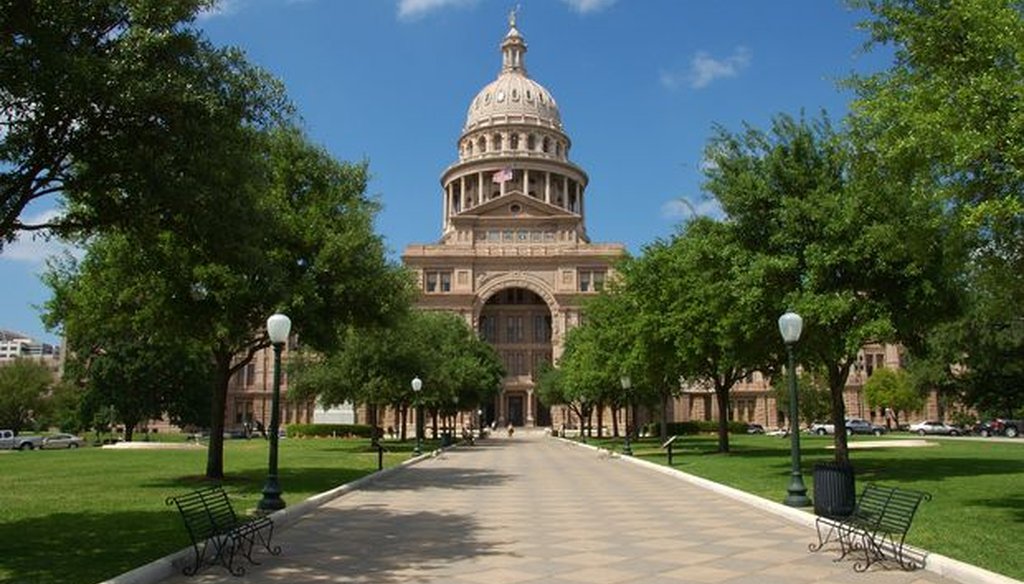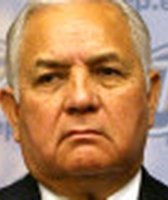Get PolitiFact in your inbox.

The Texas Capitol in Austin.
In a letter to the editor of the Austin American-Statesman, Austin artist Christine Gilbert cited a state website to declare the Texas Capitol faces south to honor a revolutionary battle at Goliad.
Really?
Gilbert’s letter, published July 11, 2015, opened by mentioning reader Jim Challstrom’s earlier letter saying he’d told Uber passengers that the Capitol (which opened in 1888) faces south "to snub the Union." In early 1861, after all, Texas had joined the rebellious Confederate States of America.
Gilbert said she wondered if Challstrom was right, noting in her letter that the Capitol "was built" starting "in 1885." Also, she wrote, the "previous Capitol was built in 1853 and also faced south," her point being that this construction occurred before the Civil War. Then Gilbert's letter quoted a statement on a Texas Senate web page: "The Texas Capitol building faces South toward Goliad, in memory of the most horrific battle of the Texas Revolution. ‘Remember the Alamo! Remember Goliad!’ were cries that were heard in 1836."
And is Goliad, site of the infamous massacre of Texas soldiers about 130 miles southeast of Austin, why the Capitol faces south?
We found no evidence for this claim, rating it False. And as we worked through the topic, the Senate secretary, Patsy Spaw, did her own checking before taking the Goliad statement off the Senate Media web page. It’s not substantiated, she said.
The historical consensus, rather, is that in keeping with surveyor Edwin Waller's vision of Austin, the Capitol was built, on a gentle rise at the top of the city’s main street, to face south toward the capital’s heart.
There's more: After we published the fact check, several readers suggested the Capitol was wisely placed facing south to catch prevailing breezes off the Gulf of Mexico. After all, air conditioning was a 20th-century innovation.
"They used to build stuff for the weather," one caller said. "If you built it facing north, you’d get all the cold winter weather coming in the front door. And if you built it facing south, you got the wind coming off the Gulf." Another caller: "Back in those days, I believe that buildings were facing north or south to catch the prevailing breezes, due to the lack of air conditioning… It just makes sense."
By email, a reader said the Capitol was built south to face downtown Austin. "A lesser possibility is air conditioning did not exist in the 19th century and if possible, people designed their homes to face south as much as possible to take advantage of the prevailing southerly winds we have in this area," he wrote. "The Capitol had cupolas built for each chamber to circulate the air and to try to cool the areas for the hot weather we have. Perhaps the need to try to cool the building and use wind flow could have been a secondary reason for having the Capitol facing south."
With help from Texas Architect magazine, we reached out to experts including Stephen Fox, a Rice University architectural historian, who agreed by email the Capitol’s orientation "would have been a factor of consideration in designing for the prevailing southeast breeze. Also minimizing the east-west (especially west) exposure" of the building, he said, "by making those the narrow ends of the building would have minimized heat gain during the hottest parts of the year.
"A south orientation is often preferred for monumental public buildings in the northern hemisphere," Fox said, "because it means that the south front will be illuminated by sunlight for the duration of daylight hours."
Houston architect Gerald Moorhead, who has been shepherding a two-volume history of the buildings of Texas, replied the Capitol was oriented, in keeping with Waller's plan, to face downtown, "down the axis of Congress Ave. The desire to create a sufficiently grand image for the Capitol informed the layout of the town plan." Like Fox, Moorhead said the building's design, with "its long, narrow axis running east-west, also facilitates natural ventilation by the prevailing southeast/northwest air flow and 'minimizes' the exposure of the facades to strong south and west sun."
Chiming in later, Lawrence Speck, a professor of architecture at the University of Texas, agreed many older buildings were oriented to take advantage of prevailing breezes from the southeast. "But I would say the overwhelming reason for the orientation of the Capitol Building is to face the Colorado River and the original city that was growing between it and the river." Speck added: "The building does not actually face due south. The orientation is roughly south, but aligned more with the topography than with the cardinal points."







































